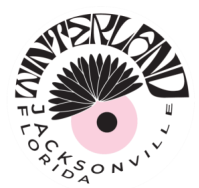When structuring an essay, meticulous planning and adherence to a logical flow of ideas are essential; for college students mindful of financial constraints, opting for an cheap essay service could be a practical means to fix receive expert guidance on paper a properly-organized and coherent essay without compromising on quality. Essays really are a common writing assignment in senior high school and college. Finding out how to structure an essay correctly is vital for writing a obvious, coherent, and compelling piece. A properly-structured essay includes a obvious beginning, middle, and finish. It uses transitions and paragraph breaks to steer the readers with the logical flow of ideas. With a few planning and organization, any author can master the essay structure.
Outline the Essay’s Structure
Before you begin writing, always outline the basic structure of your essay. This provides a roadmap to follow as you write your first draft. For a standard 5-paragraph essay, the basic outline looks like this:
Introduction paragraph
- Hook: Opening line to grab reader’s attention
- Background info: Context for rest of essay
- Thesis statement: Main argument and focus of essay
Body paragraph #1
- Topic sentence: Main idea of paragraph
- Supporting details/evidence
Body paragraph #2
- Topic sentence
- Supporting details/evidence
Body paragraph #3
- Topic sentence
- Supporting details/evidence
Conclusion paragraph
- Restate thesis
- Summarize main points
- Closing thoughts
This basic structure holds true for longer essays as well. Simply add more body paragraphs to flesh out your key points and evidence. The outline keeps your writing organized.
Effectively structuring an essay involves organizing ideas cohesively and presenting a logical progression; for students aiming for excellence, considering the guidance of the best dissertation writing services can provide valuable insights into crafting a well-structured essay that meets the highest standards of academic rigor and clarity.
Craft a Strong Introduction
An effective introduction serves as the reader’s first introduction to your writing and should engage readers and draw them further in. A captivating introduction should capture their attention while drawing them deeper into an essay’s argument or topic.
Start off your essay with an engaging hook – something such as an interesting fact, statistic, question, quote anecdote anecdote definition description opening line related to your topic that draws the audience’s interest immediately. Avoid beginning generically such as with “Throughout history…” as that would only serve to confuse and bore readers further.
Next, give brief background information or context to educate the reader on your topic. End the intro with a clear, focused thesis statement that sums up your central argument or position on the topic. The thesis sets the direction for the rest of the essay.
Develop Your Argument in the Body
The body paragraphs present your main points and supporting evidence. Typically, aim for 3-5 paragraphs in the body depending on the assigned length.
Each body paragraph should have:
- A topic sentence that states the paragraph’s main idea/point
- 2-4 sentences elaborating on that point with reasoning, facts, examples, analysis, etc.
- A closing sentence that transitions to the next paragraph
Organize the body paragraphs logically to flow well. Arrange your strongest points first and last. Vary paragraph length to avoid monotony. Use transition words like “First, Second, Next, Finally” to link paragraphs together seamously.
Provide Strong Evidence
Backup your claims with ample evidence and examples. Different types of evidence include:
- Facts and statistics
- Quotes from experts
- Anecdotes and personal experiences
- Studies and surveys
- Definitions and theories
- Comparisons and contrasts
Cite sources properly. Explain how the evidence supports your points. Don’t just state facts – analyze and interpret them to boost your argument.
Conclude Your Essay
The conclusion wraps up your essay neatly. Avoid simply summarizing the whole essay. Instead, restate your thesis in different words and review your main points briefly.
You may also discuss the broader implications of the subject or suggestions for future research. Close having a memorable final statement that captures the value of your argument leaving an enduring effect on the readers.
Use Transitions
Transitions are the connective tissue that ties your essay together smoothly. They guide the reader along the progression of ideas.
Use transition words and phrases at the start of paragraphs and between sentences:
- To open with a transition: For example, In addition, Similarly
- Between sentences: However, Moreover, Nonetheless
Repeating keywords also connects ideas. Vary sentence structure to avoid choppiness. Short, punchy sentences pack power.
Edit and Revise
After completing your first draft, revise thoroughly to sharpen the language and logic. Tighten up sentences for clarity and concision. Check that your thesis statement and main points are clear. Fill in gaps in the argument with more evidence as needed.
Finally, proofread carefully for grammar, spelling, and formatting errors. Read sections aloud to catch awkward phrasing. Ask a peer to review your draft for a fresh perspective. With revision, you can take your essay structure from good to great.
Conclusion
A strong essay structure begins with an outline, contains an engaging introduction, logically ordered body paragraphs citing evidence, and wraps up with a memorable conclusion. Use transitions to guide readers through your reasoning. Proofread and refine the language to craft a polished final essay. Following this basic structure will set any writer up to write a stellar essay.

